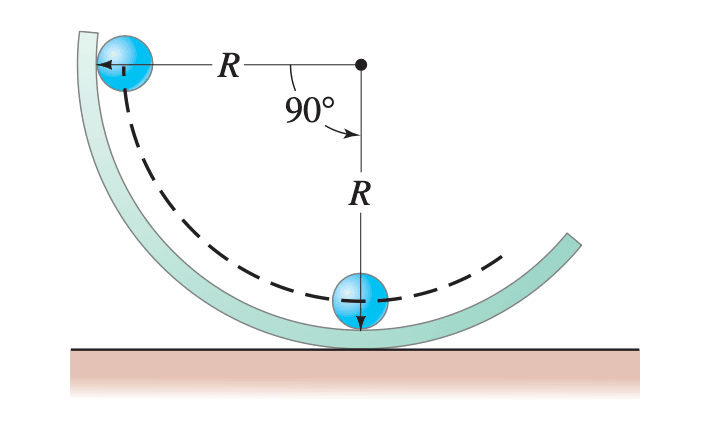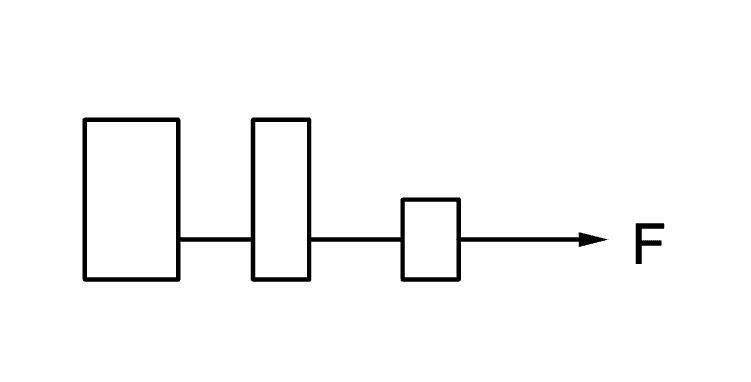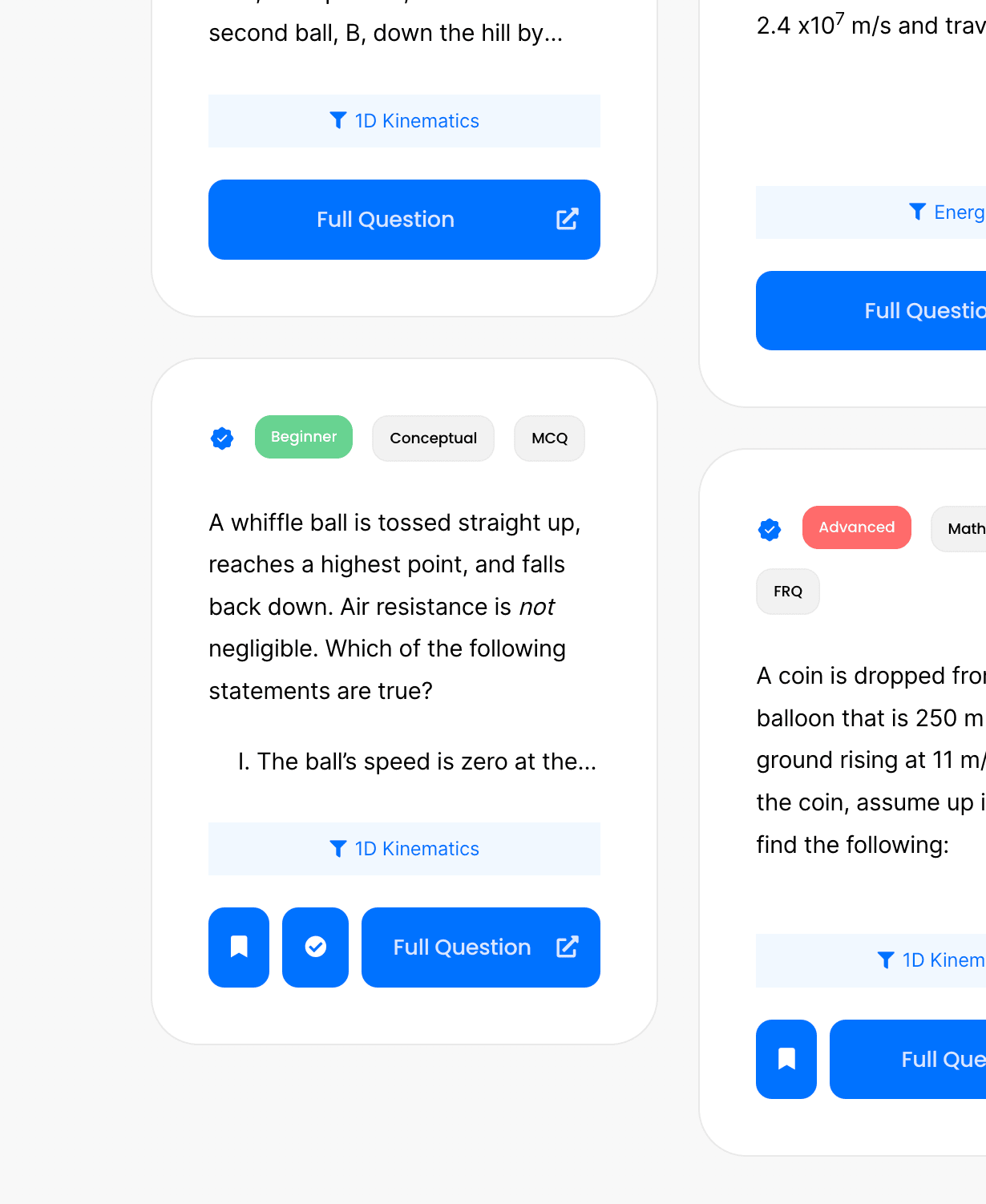If an elephant were chasing you, its enormous mass would be most threatening. But if you zigzagged, its mass would be to your advantage. Why?

A ball of radius \( r \) rolls on the inside of a circular track of radius \( R \). If the ball starts from rest at the left vertical edge of the track, what will be its speed when it reaches the lowest point of the track, rolling without slipping?
Two students are on a balcony 19.6 m above the street. One student throws a ball vertically downward at 14.7 m/s. At the same instant, the other student throws a ball vertically upward at the same speed. The second ball just misses the balcony on the way down.
A wheel of moment of inertia of \( 5.00 \) \( \text{kg} \cdot \text{m}^2 \) starts from rest and accelerates under a constant torque of \( 3.00 \) \( \text{N} \cdot \text{m} \) for \( 8.0 \) \( \text{s} \). What is the wheel’s rotational kinetic energy at the end of \( 8.0 \) \( \text{s} \)?

A simple pendulum oscillates with amplitude [katex]A[/katex] and period [katex]T[/katex], as represented on the graph above. Which option bests represents the magnitude of the pendulum’s velocity [katex]v[/katex] and acceleration [katex]a[/katex] at time [katex] \frac{T}{2} [/katex]?
An object is moving to the west at a constant speed. Three forces are exerted on the object. One force is \( 10 \) \( \text{N} \) directed due north, and another is \( 10 \) \( \text{N} \) directed due west. What is the magnitude and direction of the third force if the object is to continue moving to the west at a constant speed?

Shown above are three masses of \(6 \, \text{kg}\), \(3 \, \text{kg}\), and \(1 \, \text{kg}\) (in order from left to right). You pull on the 1kg mass with a force \(F\) of \(15 \, \text{N}\) along a frictionless surface.
A circus cannon fires an acrobat into the air at an angle of \( 45^\circ \) above the horizontal, and the acrobat reaches a maximum height \( y \) above her original launch height. The cannon is now aimed so that it fires straight up, at an identical speed, into the air at an angle of \( 90^\circ \) to the horizontal. In terms of \( y \), what is the acrobat’s new maximum height?
A kickball is rolled by the pitcher at a speed of 10 m/s and it is kicked by another student. The kickball deforms a little during the kick, and then rebounds with a velocity of 15 m/s as its shape restores to a perfect sphere. Select all that must be true about the kickball and the kicking foot system.
Which of the following graphs shows runners moving at the same speed? Assume the \(y\)-axis is measured in meters and the \(x\)-axis is measured in seconds.
The first \(10 \, \text{meters}\) of a \(100 \, \text{meter}\) dash are covered in \(2 \, \text{seconds}\) by a sprinter who starts from rest and accelerates with a constant acceleration. The remaining \(90 \, \text{meters}\) are run with the same velocity the sprinter had after \(2 \, \text{seconds}\).

A system consists of two small disks, of masses \( m \) and \( 2m \), attached to a rod of negligible mass of length \( 3l \) as shown above. The rod is free to turn about a vertical axis through point \( P \). The two disks rest on a rough horizontal surface; the coefficient of friction between the disks and the surface is \( \mu \). At time \( t = 0 \), the rod has an initial counterclockwise angular velocity \( \omega_0 \) about \( P \). The system is gradually brought to rest by friction. Develop expressions for the following quantities in terms of \( \mu \), \( m \), \( l \), \( g \), and \( \omega_0 \).
By continuing you (1) agree to our Terms of Use and Terms of Sale and (2) consent to sharing your IP and browser information used by this site’s security protocols as outlined in our Privacy Policy.
Quick Start Guide
AP physics 1, AP C, honors and advanced physics students.
Quickly filter questions by units and more.


Here’s guide to using 5 UBQ filters.
GQ = general question, MCQ = multiple choice, FRQ = free response.


Click the check or bookmark button.
Now you’ll be able to see completed or bookmarked questions at a glance!
Answer keys, personalized for you.

Phy will be responsible for grading your FRQs and GQs.
No more copy and pasting. Just solve and snap.
Questions for Mastery

By continuing you agree to nerd-notes.com Terms of Service, Privacy Policy, and our usage of user data.